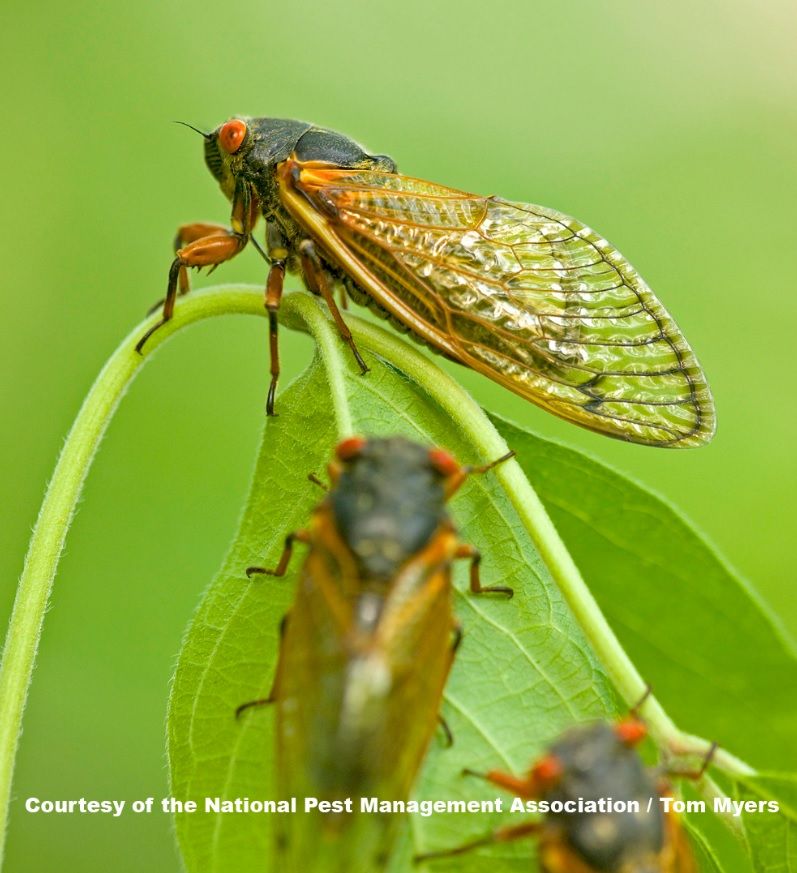Navy Seeks Secrets of Cicada Song

For having relatively small bodies, cicadas make an impressive racket. Now, researchers with the U.S. Navy are trying to tap into the insects' acoustic abilities to create better techniques for remote sensing and other communications underwater.
Scientists have long been captivated by periodical cicadas, which have what may be the most extended youth of any known insect. It takes them 13 or 17 years to mature, depending on the brood. Cicadas also spend most of their lives underground, but when they reach adulthood, they crawl out of the dirt for a few weeks to molt and mate, have babies and die.
Their brief presence above the surface is marked by a deafening chorus of mating calls; East Coasters experiencing the emergence of Brood II are well aware of the noise, which can reach up to 100 decibels.
Scientists know that the cicada's loud song comes from the rapid vibration of the ribbed drumlike plates called tymbals on the insect's exoskeleton. Derke Hughes, a researcher at the Naval Undersea Warfare Center in Newport, R.I., explained in a statement that cicadas have a unique ability to deform their bodies to set off this vibration.
If a human body were like a cicada's, Hughes said, it would have a thick set of muscles on either side of the torso that could squeeze the chest inward, making the ribs buckle one at a time. Releasing the muscles would let the ribs spring back into shape. Hughes said that kind of squeezing and releasing is basically what is happening in the cicada's body, but about 300 to 400 times a second. [Ewww! 6 Crazy Facts About Cicadas]
Though the basic mechanisms behind the cicada's sound-making are understood, mimicking them is challenging, Hughes said. He is still working on a physics-based model to accurately describe how the cicada produces its mating call. Such a model could help researchers understand how to make a loud noise using very little power, which could have applications for remote sensing underwater, ship-to-ship communications and rescue operations, Hughes said.
Hughes and his colleagues are set to present their research in Montreal today (June 3) at the International Congress on Acoustics.
Sign up for the Live Science daily newsletter now
Get the world’s most fascinating discoveries delivered straight to your inbox.
The team previously uncovered some subtleties in the cicadas' technique. A few years ago they found that as the male cicada approaches the female, its sound gets softer, which Hughes described as the insect equivalent of switching to a bedroom voice.
Follow Megan Gannon on Twitter and Google+. Follow us @livescience, Facebook & Google+. Original article on LiveScience.com.












